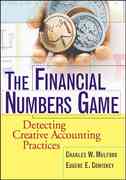Part 5 and 6 are cut off they are as followed:
Part 5.Compute the upper misstatement limit (UML) for the sample you selected. Follow the procedures outlined in the chapter. You can use the Reliability Factors for Overstatements table to determine the factors to use for the "Upper Misstatement Limit." Document your calculation of UML.
Part 6.Evaluate your results both quantitatively and qualitatively. Develop both a statistical conclusion and an audit conclusion based on your sample. Document your conclusions about your inventory tests.
4) Hofstra X 4 Home x Conten x Ch 10: x VitalSo X Conten x C Get Ho X C Bob Do x C Bob Dc x C Bob Dc X C Get Ho x + X O A https://online.vitalsource.com/#/books/9781119401810/cfi/6/44!/4/2/68/2/2@0:0 Sign in Audit Decision Cases Red Cedar Office Furniture Q Question Cio.1 is based on the following case. The data file needed to complete this case is available in WileyPLUS. Bob Downe is auditing Red Cedar Office Furniture (RCOF), a manufacturer of office furniture and custom cabinets. RCOF was founded 25 years ago by a husband-and-wife team and has grown rapidly in the last five years as solid, environmentally friendly, wooden furniture has grown in popularity. The company has inventory consisting of raw materials, work in process, and finished goods with a book value of $6,719,028.95. You have been assigned the task of testing the accuracy of the final inventory compilation for RCOF. You may assume that you have separately observed the inventory and that you are satisfied that the inventory was accurately counted. However, you need to test that quantities were accurately transcribed to the final accumulation and valuation of inventory and that the inventory is correctly priced and accumulated. A file showing the client's accumulation of inventory is available in WileyPLUS. inventory. This case will guide you through the process of selecting a sample from the client's inventory, comparing audited values with book values, and drawing a conclusion about the fair presentation of C10.1 (LO 8) Challenging PPS sampling audit case Part 1. Determine the objectives of the test. You are auditing both quantities and pricing of the final inventory accumulation. a. Explain the assertions that you are testing. b. Explain the evidence that you would obtain to test those assertions. Part 2. Determine sample size based on the following judgments (round sample size to the nearest whole number). a. Tolerable misstatement is assessed at $325,000. b. The risk of incorrect acceptance is assessed at 37%. c. Expected misstatement is assessed at $100,000. Whether the auditor uses nonstatistical sampling or statistical sampling, the same basic factors are considered in determining sample size. Once the auditor has made professional judgments about these factors, the following formula is used to determine sample size in PPS sampling: n = (BV x RF) [TM - (EM x EF)] where BV = book value of population tested We've updated our read aloud feature! RF = reliability factor for the specified risk of incorrect acceptance assuming zero overstatements (see the following table Reliability Factors for Over Give it a try here 10-47 Aa ) Type here to search O Eli a C W 12:09 PM A 11/18/20204 Hofstra X 4 Home x Conten X Ch 10: x VitalSo X Conten X C Get Ho X C Bob Do x C Bob Dc x C Bob Dc x C Get Ho x + X O https://online.vitalsource.com/#/books/9781119401810/cfi/6/44!/4/2/68/28/4/2/2/2/2/2/4/2/2/2/2/2@0:8.22 Sign in RF = reliability factor for the specified risk of incorrect acceptance assuming zero overstatements (see the following table Reliability Factors for Overstatements) A TM = tolerable misstatement EM = expected misstatement (see the subsequent table Expansion Factors for Expected Misstatements) EF = expansion factor for expected misstatement Document your determination of sample size. Q RELIABILITY FACTORS FOR OVERSTATEMENTS Number of Risk of Incorrect Acceptance Overstatements 1% 5% 10% 13% 15% 20% 25% 30% 37% O 4.61 3.00 2.31 2.00 1.90 1.16 1.39 1.21 1.00 6.64 4.75 3.89 3-56 3-38 3-00 2.70 2.44 2.14 8.41 6.30 5-33 4.94 4.72 4.28 3.93 3.62 3.25 10.05 7.76 6.69 6.25 6.02 5-52 5-11 4-77 4.34 11.61 9.16 8.00 7-53 7.27 6.73 6.28 5.90 5-43 13.11 10.52 9.28 8.77 8.50 7.91 7-43 7.01 6.49 14-57 11.85 10.54 10.00 9.71 9.08 8.56 8.12 7.56 16.00 13.15 11.78 11.21 10.90 10.24 9.69 9.21 8.63 17.41 14.44 13.00 12.41 12.08 11.38 10.81 10.31 9.68 18.79 15.71 14.21 13-59 13.25 12.52 11.92 11.39 10.74 20.15 16.97 15-41 14.77 14.42 13.66 13.02 12.47 11.79 EXPANSION FACTORS FOR EXPECTED MISSTATEMENTS Risk of Incorrect Acceptance 1% 5% 10% 15% 20% 25% 30% 37% Expansion factor 1.90 1.60 1.50 1.40 1.30 1.25 1.20 1.15 Part 3. Develop a scenario that supports the auditor's conclusion that the appropriate risk of incorrect acceptance is 37%. Part 4. Select a sample and apply audit procedures. Select the PPS sample using the sample size determined in Part 2 above. Choose your own random start based on the size of the sampling interval (each student should have a different random start). Determine the book value and audited value for each item in your unique sample. Document your s audited values We've updated our read aloud feature! Part 5. Compute the upper misstatement limit (UML) for the sample you selected. Follow the procedures outlined in the chapter. You can use the Reliability Fa Give it a try here 10-48 Aa ) Type here to search O a C W 12:10 PM A 11/18/2020








